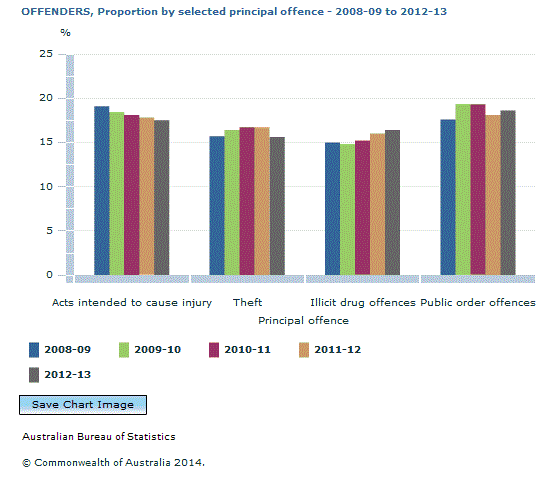4519.0 - Recorded Crime - Offenders, 2012-13  Quality Declaration
Quality Declaration
ARCHIVED ISSUE Released at 11:30 AM (CANBERRA TIME) 27/02/2014
Page tools:
 Print Page Print Page
 Print All Print All
| ||
PRINCIPAL OFFENCE "Principal offence" refers to the most serious offence type for which a person has been proceeded against during the reference period. This is determined through the ranking of offences in the National Offence Index (NOI). For details of the Index refer to Appendix 2. For a definition of "principal offence", refer to the Explanatory Notes, paragraphs 13-16. Nationally, the most prevalent principal offences were:
There was minimal change in the distribution of the main principal offence types across the offender populations between 2011-12 and 2012-13 (Table 1). The proportion of offenders with Theft and Acts intended to cause injury as a principal offence declined, while the proportion with a principal offence of Illicit drug offences and Public order offences increased.  Source(s): Recorded Crime - Offenders The median age of offenders varied by type of principal offence. The median age was lower for the principal offences of:
The median age was higher for the principal offences of:
Document Selection These documents will be presented in a new window.
|
||
